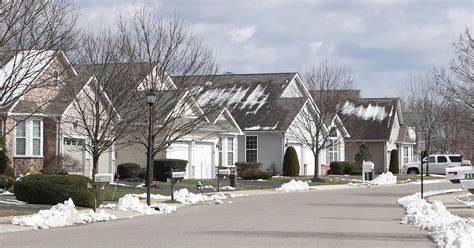He lives where most Americans live—in suburbia.
他住在郊区,大多数美国人也住在那。
His house sits on a plot that is 50 feet wide and 100 feet deep.
他的房子坐落在一块50英尺宽100英尺深的土地上。
In front is a pavement, four feet wide, then a strip of green containing a tree, seven feet, then a road, 40 feet.
前面是一条四英尺宽的人行道,然后是一条绿带,里面有一棵七英尺的树,然后是一条40英尺的路。
His neighbours’ houses look much the same.
他邻居的房子看起来大同小异。
At six per acre, homes are close enough for arguments to be overheard, but only if you pay attention.
每亩地有6户人家,他们离得很近,近到能听见争吵声,但前提是你要注意。
They are close enough for comfort.
他们离得很近,很舒服。

The suburb is Lakewood, south of Los Angeles.
郊区是洛杉矶南部的莱克伍德。
It was built during and after the second world war and was at first occupied mostly by white manual workers.
它建于第二次世界大战期间和战后,最初主要由白人体力劳动者占据。
Although the developers were Jewish, Jews were initially barred from living there, as were blacks.
虽然开发商是犹太人,但犹太人和黑人最初被禁止在那里居住。
Among the early settlers were the parents of D.J. Waldie.
在早期的定居者中有沃尔迪的父母。
He became a city official, and in 1996 published “Holy Land”, a short, delightful book about the place.
他成为了一名市政府官员,并于1996年出版了一本关于这个地方的简短而有趣的书《圣地》。
It is a reminder that many people are happy to lead constrained lives, even if they are free to move.
这提醒我们,许多人乐于过着受约束的生活,即使他们可以自由行动。
Earlier defences of America’s suburbs, such as Herbert Gans’s “The Levittowners”, argued that they were more diverse and sociable than their critics alleged.
如赫伯特·甘斯的《列维敦人》中包含早期对美国郊区的辩护,书中认为他们比批评者所说的更加多样化和社交化。
MrWaldie does not quite agree.
沃尔迪先生不太同意。
His childhood, with its packed swimming pools and freewheeling Monopoly games, was sociable. Adulthood is less so.
他的童年在拥挤的游泳池和随心所欲的垄断游戏中度过,是社交的。成年后却很少这样了。
Few people walk the streets; each house is an island, visited occasionally by friends and family, who come and go in cars.
很少有人走在街上;每家每户都是一个岛,偶尔有朋友和家人来拜访,他们开车来来去去。
“The critics of suburbs say that you and I live narrow lives,” he writes. “I agree.”
他写道:“郊区的批评者说,你和我过着狭隘的生活。”。“我同意。”
译文由可可原创,仅供学习交流使用,未经许可请勿转载。












